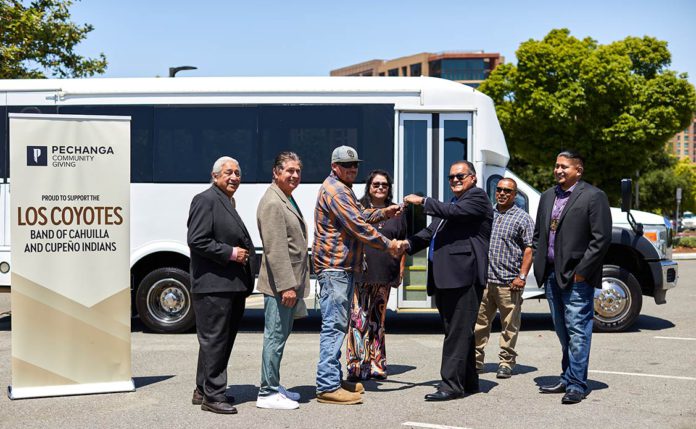TEMECULA, CA – When Pechanga learned of the Los Coyotes Tribe’s need for a shuttle for their youth program, tribal leaders quickly moved to identify a vehicle that would last them for years to come. For Pechanga, giving back to sister tribes in the region to ensure Native communities have the resources they need to thrive, especially for education and youth, is a privilege.
The Los Coyotes Band of Cahuilla and Cupeño Indians will use the 20-passenger shuttle to get kids to and from youth sports and education events, as well as other tribal programs.
The Los Coyotes reservation is over 25,000 acres and is remotely located in northeastern San Diego County near Warner Springs, and borders the Anza-Borrego Desert State Park and Cleveland National Forest with the highest point in San Diego County. A typical drive to San Diego is 80 miles and can take up to two hours, putting a time and financial strain on Los Coyotes families.
“To go anywhere or do almost anything, it is a 45-minute drive, but often closer to an hour and a half,” said PJ Stoneburner, Vice Chairman of the Los Coyotes Tribe. “Having this shuttle for our kids will take a huge burden off of parents, and enables more of our young people and families to have the opportunity to experience various events or programs that may be have unattainable because parents couldn’t afford the time commitment or expensive gas prices.”
The $20,000 shuttle is a newly refurbished passenger shuttle previously used to move guests around Pechanga Resort Casino. With low mileage and well maintained by Pechanga’s crew, the shuttle should last Los Coyotes for years.
“We are humbled to be able to provide this vehicle to Los Coyotes to help them get youth to various events and programs,” said Ken Perez, President of Pechanga Development Corporation. “It is important for Pechanga to stand with our sister tribes, particularly those with fewer resources. This is one small example of that commitment.”

















































